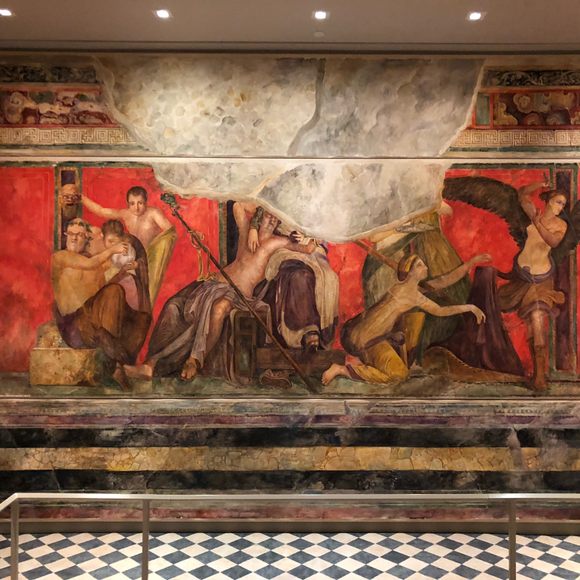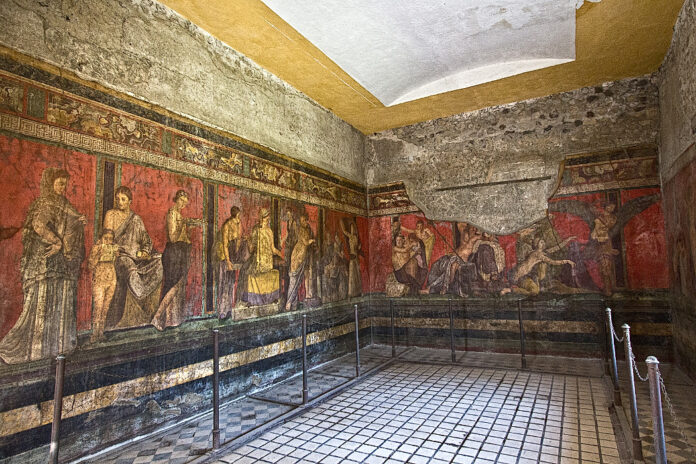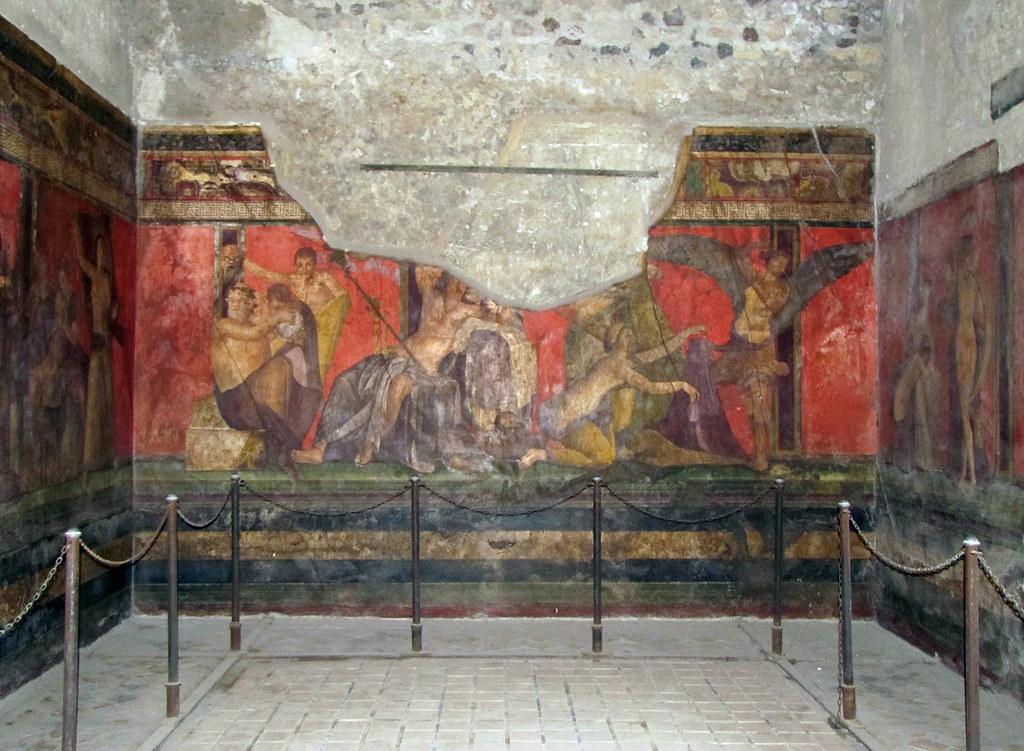The ancient Roman city of Pompeii has long captivated the imagination of historians, archaeologists, and tourists alike. Frozen in time by the catastrophic eruption of Mount Vesuvius in 79 AD, Pompeii offers a remarkable window into the daily lives and cultural practices of the Roman Empire. Amidst the ruins of this once-thriving metropolis, one particular structure stands out as a testament to the artistic and religious traditions of the era – the Villa of the Mysteries.
This extraordinary villa, with its well-preserved frescoes and intriguing history, invites visitors to step back in time and immerse themselves in the captivating world of ancient Rome. In this blog post, we will delve into the fascinating history of the Villa of the Mysteries, explore the mysteries and rituals depicted in its renowned Room 5, and uncover the significance of this remarkable site in the broader context of Roman culture and heritage.
The History of the Villa of the Mysteries
The Villa of the Mysteries dates back to the 2nd century BC, but it underwent significant renovations in the 80-70 BC period, which gave it its current form. Located just outside the walls of ancient Pompeii, this suburban villa was once a grand and opulent residence, serving as a retreat for the Roman elite.
Interestingly, the villa was not destroyed by the cataclysmic eruption of Mount Vesuvius in AD 79. Instead, the volcanic ash that engulfed Pompeii preserved the building, including its roofs and ceilings, allowing for its remarkable state of preservation. The villa was excavated in 1909, alongside the rest of Pompeii, revealing its treasures to the modern world.

One of the most remarkable aspects of the Villa of the Mysteries is its exceptional state of preservation. The volcanic ash that buried Pompeii acted as a protective blanket, preserving the villa’s structures, including its frescoes, with remarkable clarity. This remarkable preservation has allowed researchers and historians to study the villa in great detail, shedding light on the daily lives, cultural practices, and artistic achievements of the Roman elite.
The Mysteries of Room 5
The most renowned feature of the Villa of the Mysteries is the remarkable fresco cycle found in Room 5. These well-preserved paintings are believed to depict the initiation of a bride into a Greco-Roman mystery cult, potentially associated with the god Dionysus (known as Bacchus to the Romans) and his wife, Ariadne.
The walls of Room 5 are adorned with captivating images, including female figures, maenads (the female followers of Dionysus), winged figures, and fauns engaged in various ritual activities. The exact nature and purpose of this ritual are still not fully understood, but it is widely accepted that the room was used for special occasions and was only accessible to invited guests.

The frescoes in Room 5 are considered some of the finest examples of ancient Roman art, showcasing the remarkable skill and artistry of the Roman painters. The vivid colors, intricate details, and dynamic compositions of the paintings transport viewers to the world of ancient Roman religious practices and beliefs.
Scholars have long debated the precise meaning and significance of the frescoes in Room 5, with various interpretations proposed over the years. Some believe the paintings depict the initiation of a young woman into the cult of Dionysus, while others suggest they represent a more general celebration of the god and his followers. Regardless of the specific interpretation, the frescoes in Room 5 offer a unique and invaluable glimpse into the religious and social practices of the Roman elite.
The Significance of the Villa of the Mysteries
The Villa of the Mysteries stands as a testament to the remarkable artistic and cultural achievements of ancient Rome. The well-preserved frescoes, which are regarded as some of the finest examples of ancient Roman art, provide a unique and invaluable glimpse into the religious and social practices of the time.

Furthermore, the villa’s excellent state of preservation offers researchers and visitors alike a rare opportunity to explore the daily life and customs of the Roman elite. The discovery of a wine press within the villa’s grounds suggests that the owners were engaged in winemaking, a common practice among the wealthy Roman landowners of the era.
The Villa of the Mysteries is not only a significant archaeological site but also a cultural landmark that continues to captivate and inspire people from around the world. Its exquisite frescoes, intriguing history, and remarkable state of preservation make it a must-visit destination for anyone interested in exploring the wonders of the Roman Empire.
Conclusion
As we walk the halls of the Villa of the Mysteries, we are transported to a time when the gods, rituals, and daily life of ancient Rome were woven into the very fabric of the world. This extraordinary site stands as a testament to the enduring legacy of the Roman civilization, offering a unique and invaluable glimpse into the past.
The Villa of the Mysteries is a true gem of ancient Roman heritage, a place where the past comes alive in vivid detail. Its exquisite frescoes, intriguing history, and remarkable state of preservation make it a must-visit destination for anyone interested in exploring the wonders of the Roman Empire. As we uncover the mysteries that lie within its walls, we are reminded of the remarkable achievements and cultural richness of this remarkable civilization.

